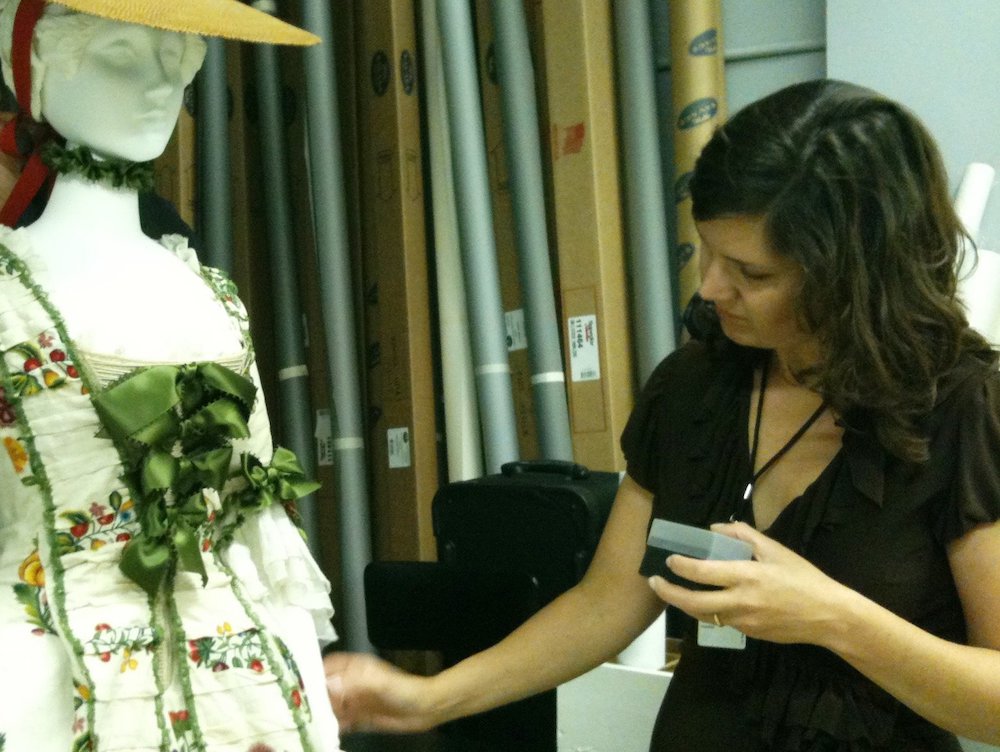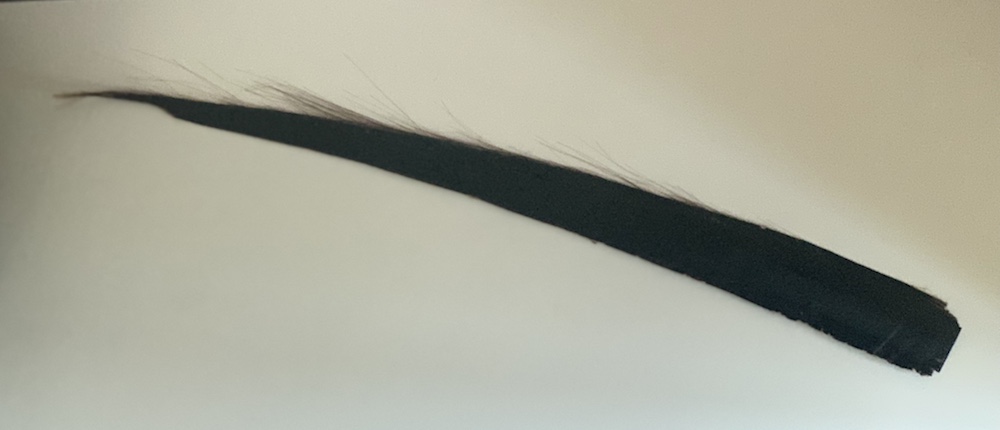
Kimberly Chrisman-Campbell is a fashion historian, curator, and author of three books, most recently, The Way We Wed: A Global History of Wedding Fashion. Before joining a Zócalo/Natural History Museum of L.A. County event, “Does Power Dressing Have the Power to Change Politics?,” she spoke in our green room about decompressing with Bollywood Zumba, her aversion to pants, and single malt whiskey.
How do you procrastinate?
Pinterest and eBay. And Twitter.
What do you look for on eBay?
I’m always looking for wearable vintage. I collect a couple of pretty obscure American designers, so I’m always looking for things by them. And vintage jewelry. I love a vintage statement necklace.
Do you have a favorite vintage eBay find?
I have a Bonnie Cashin raincoat. That was an online find, and it fits me perfectly. Unfortunately, I live in L.A., so I don’t get to wear it very often.
You’ve written three books about fashion. What is one of the wackiest things that you’ve found while doing archival research?
I had a research fellowship at the Royal Ontario Museum where I was working on a dress supposedly worn by Marie Antoinette. The dress was embroidered with flowers and feathers, and since I don’t know much about flowers or birds, I was able to call on the resources of this encyclopedic museum. I got the botany department up there to help me identify the flowers, and then I got the bird guy to come and tell me about the feathers. So he looked at them and he told me, “OK, this is this kind of pheasant. And this is a peacock from this part of India. Would you like to see some of these?” I thought he meant feathers, so I said sure.
I went down with him a couple of floors to the ornithology department. The storage area looks just like a costume storage area with lots of archival storage drawers. He pulled one open and there was a bunch of dead birds. He showed me the pheasant, which had, you know, cotton coming out of its eyeballs. And then he said, “Oh, now I’ll show you the peacock.” The peacock was actually so big that it wouldn’t fit in the drawer, they had to cut it in half. So it was the peacock body and the peacock tail in the same drawer, but not connected anymore. I’m a vegetarian; I just about fainted at that point. He was really excited about showing me dead birds, so I’m grateful to him. But it was not what I was expecting when I signed up to be a fashion historian, let’s put it that way.
What was your favorite place to go as a kid?
I grew up in L.A. I used to go to LACMA and the Huntington a lot. That really got me interested in art history and fashion history. And I got to travel a lot when I was pretty young, [which] sparked my interest in history and the clothes everybody was wearing.
Do you remember the first item of clothing that you had a sentimental attachment to?
When I was really young, my favorite outfit was a red t-shirt and a purple wrap skirt that had elephants on it. It was a batik skirt. Not a very attractive color combination—in any era—but I absolutely loved it.
Has there been a teacher or a boss who’s changed your life?
I was really fortunate to get to do my graduate work in London at the Courtauld Institute of Art with Aileen Ribeiro, who was a hero of mine long before I started grad school. Getting to work with her was a dream come true.
How have you been decompressing during quarantine?
I’ve been pretty productive. I’ve been working on multiple book projects at once. I’ve been doing a lot of Zoom lectures and panels like we’re doing tomorrow, so that’s been keeping me busy. As far as decompressing, I pretty much hate to exercise, but I was doing a Bollywood Zumba class that has now gone online. So that’s probably my most favorite thing to do to decompress.
What is your least favorite recent fashion trend?
Fast fashion in general. And I really do not wear pants at all. So skinny jeans, low-rise jeans, any kind of jeans—I’m very much not interested. I’ll wear [yoga pants] for my Bollywood Zumba class, and that’s about it. My next book is about skirts, and I’m the perfect person to write it because I don’t wear pants.
What year, past or future, would you most like to time travel to?
1783, or the 1780s in general. That’s the decade between the American Revolution and the French Revolution. I think it just would’ve been a really exciting time to be alive.
I picked 1783 because that’s the year that Marie Antoinette’s portrait in the chemise dress was painted. It’s the year of a lot of great art and culture. It’s not too close to either one of the revolutions, but I think the generation of people who were young at that time really saw it all. And not all of them lived to tell the tale.
Of everything hanging on your walls, do you have a favorite piece?
A piece of baleen, about a yard long. This is whalebone, the plastic of the 18th century, the backbone of 18th-century fashion—literally and metaphorically. Whalebone was used in hoop petticoats; it was used in corsets.
It’s not bone at all. It’s baleen, the kind of hairy, keratin substance that takes the place of teeth in baleen whales. It’s hard but flexible. It’s kind of like your fingernails, but it’s hairy here, and you can split it like string cheese. I can just pull off really narrow strips, and they’re really strong. They will break if you try hard enough, but they’re perfect for reinforcing a hoop petticoat or a corset. Of course, I acquired this legally. It is a controlled substance today, but it’s really fun to have for teaching, and for explaining to people what whalebone is. People think it’s a bone; we think it’s like a rib. It almost behaved as a rib if you were wearing it in a corset, but it’s actually not as uncomfortable as you would think to wear.

Would you say you’re tactile learner?
Definitely. Yeah. That’s the best part about being a curator is you get to touch stuff. When you go to a museum as a visitor, they discouraged that.
Do you have a hidden talent?
I know a lot about single malt whiskey, because I did my PhD in Scotland. So people are always surprised that I have really strong opinions about whiskey. I’m such a whiskey snob, you can’t even get my favorite whiskey in this country. You can only get it in Scotland. It’s called Strathisla.
When in your life have you experienced the most culture shock?
Probably trying to buy food in a Swedish supermarket. They’ve got one aisle of yogurt, one aisle of crispbread, and one aisle of pickled fish—and that’s about it. I did a lot of my dissertation research in Stockholm, and I love it. I would move there if it weren’t for the food situation.



